Kyoto Events in December 2023
Kyoto, the cultural capital of Japan, comes alive in December with a vibrant array of festivals and traditions that offer a unique and enchanting experience. Despite the arrival of winter, the city is bustling with preparations for end-of-year festivities and celebrations. As the last of the autumn foliage falls, Kyoto’s shrines and temples embrace the spirit of the season, showcasing rituals and ceremonies that cleanse the events of the present year and welcome the new year with great reverence and joy.
| Date | Event | Category |
|---|---|---|
| December 8th | Hari Kuyō | Tradition |
| December 8th | Kyō-ryōri Exhibition | Culinary |
| December 10th | Gishi-e Hōyō | Festival |
| December 15th | Yamashina Gishi Matsuri | Festival |
| December 20th | Shimai Kōbō | Festival |
| December 25th | Shimai Tenjin | Festival |
| December 31st | Joya-no-kane | Tradition |
Hari Kuyō

Date: December 8th, 2023
The Ancient Art of Hibiri: Honoring Broken Needles
Every December 8th, an unusual and beautiful Japanese tradition takes place known as Hari Kuyō (針供養). Held predominantly in Kyoto at the Horin-ji Temple, this centuries-old ceremony is a memorial service for used and broken needles. Seamstresses, artisans, and housewives come together to express gratitude to these tiny tools by sticking them into soft konnyaku jelly, as they pray for improved skill in needlework.
Originating in the Heian period (1,000 years ago) when sewing was considered an important household skill, the ceremony highlights principles that are unique to Japanese culture: treasuring items and treating even the humble needle with respect.
Reverence at Horin-ji Temple
The memorial service at Horin-ji Temple is particularly special as it is dedicated to needles used by the imperial family. Before the service begins at 1:00 PM, visitors can enter the main hall ten minutes early to watch solemn sutra recitations and experience Buddhist sermons centered around this unique ceremony.
Attendees also have the opportunity to participate in an elegant dance called Orihime-no-mai (Dance of the Weaver Women). Performed by four women dressed in Nara period costumes (1,300 years ago), it signifies their prayers for mastering the technique of needlework. Witnessing these brightly-colored costumes and beautiful dance routines is truly a sight!
Spiritual Importance of Craftsmanship
While it might seem odd to celebrate broken needles, Japan’s spiritual perspective promotes gratitude towards used items. Various belief systems – from animism found in Shintoism where souls are believed to inhabit all things, including objects – inspires actions such as Hari Kuyō.
In other fields, ceremonies called Kuyo are held to honor tools that can be burned, such as brushes used by calligraphers, tea ceremony utensils, and chefs’ knives. However, needles cannot be burned and instead receive a gentler end by being laid to rest in tofu or konnyaku jelly.
Attendance and Growing Popularity
While the tradition of sewists holding Hari Kuyō at home has waned due to modern times, the temple-organized ceremonies continue to thrive. Fashion professionals, kimono manufacturers, design students, and home sewists unite on December 8th in Kyoto (and February 8th in the Kanto region) to partake in these soulful events.
Together they express thanks for their tools’ hard work, pray for their success in future projects, and request divine guidance for further skill or dexterity. The rich history of showcasing gratitude towards seemingly mundane objects demonstrates the profound spiritual connection that the Japanese hold close to their hearts.
Kyō-ryōri Exhibition
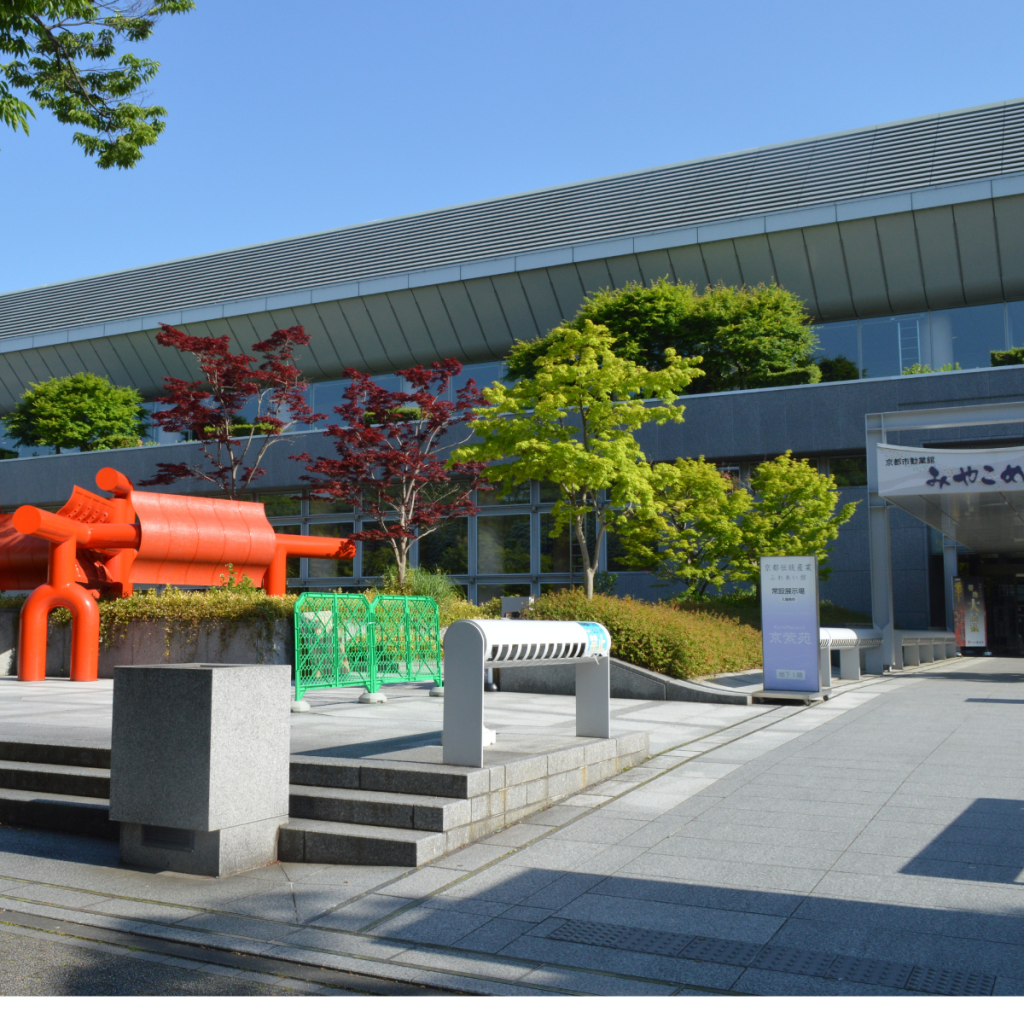
Date: December 8th, 2023
Annual Event Held at the Historic Miyako Messe Convention Center
Kyoto, once the imperial capital of Japan, has a rich culinary history that has thrived for over a thousand years. The local cuisine, Kyō-ryōri, has developed to cater to the refinement and taste of the capital’s nobility and connoisseurs. To celebrate this elegant and traditional cooking style, Miyako Messe, a convention center near Heian Jingū Shrine, hosts an annual Kyō-ryōri exhibition on December 13th and 14th.
The exhibition showcases sumptuous and elaborate dishes created by some of the city’s most highly-regarded restaurants. Attracting visitors from around the country, this event highlights the intricate flavors, shapes, and colors of Kyoto’s seasonal ingredients while paying tribute to their creative culinary heritage.
Yamakage Shrine: A Fitting Venue for Honoring a Deity of Food
The exhibition layout begins with a visit to the small Yamakage Shrine, which is dedicated to a deity of food and cooking. Here, participants can reflect on the importance of cuisine throughout Kyoto’s storied past as they explore this sacred space.
Exquisite Seasonal Offerings Shine in a Feast for the Eyes
Beyond the shrine lies a veritable banquet hall filled with artful New Year offerings, extravagant sushi sets, and other visually-stunning exhibits. All dishes are carefully prepared using local ingredients and presented on exquisite ceramics and lacquerware to create a visual feast that encapsulates seasonality and festive spirit. The beauty of each dish conveys the essence of Kyō-ryōri cuisine while emphasizing its importance in Kyoto’s culture.
Diverse Schedule Features Cooking Classes, Tea Ceremonies, and Dance Performances
In addition to admiring sumptuous dishes, visitors can immerse themselves in a range of activities that explore various aspects of Kyoto’s culinary and cultural traditions. Top Kyoto chefs lead instructional cooking classes, revealing their expert techniques and the secrets behind signature Kyō-ryōri preparations.
Knife-wielding artisans from the respected Ikama school give impressive demonstrations of ancient fish filleting ceremonies – winning over crowds by showing off their incredible precision and skill. Meanwhile, Maiko dancers (apprentice geisha) perform mesmerizing traditional dances, bringing an added air of grace to the exhibition.
Visitors seeking a more spiritual experience can participate in a tea ceremony arranged by masters from the Urasenke school or witness a fascinating tuna-cutting display showcasing mastery in the culinary arts.
The program may vary by year; however, all attendees are guaranteed an entertaining and informative experience that delves into the rich history and captivating cuisine of Kyoto.
Celebrating Kyoto’s Specialties: Local Vegetables, Green Tea, and Sake
Guests can take home a piece of Kyoto’s culinary heritage with them by purchasing regional specialties such as local vegetables, fresh green tea, or sake. These foodstuffs allow diners to recreate their favorite Kyō-ryōri dishes at home while paying homage to the city’s ancient gastronomic lineage.
The annual Kyō-ryōri Exhibition in December provides a unique window into the fascinating culinary culture of Kyoto – offering a feast for both the eyes and taste buds of all who attend.
Gishi-e Hōyō
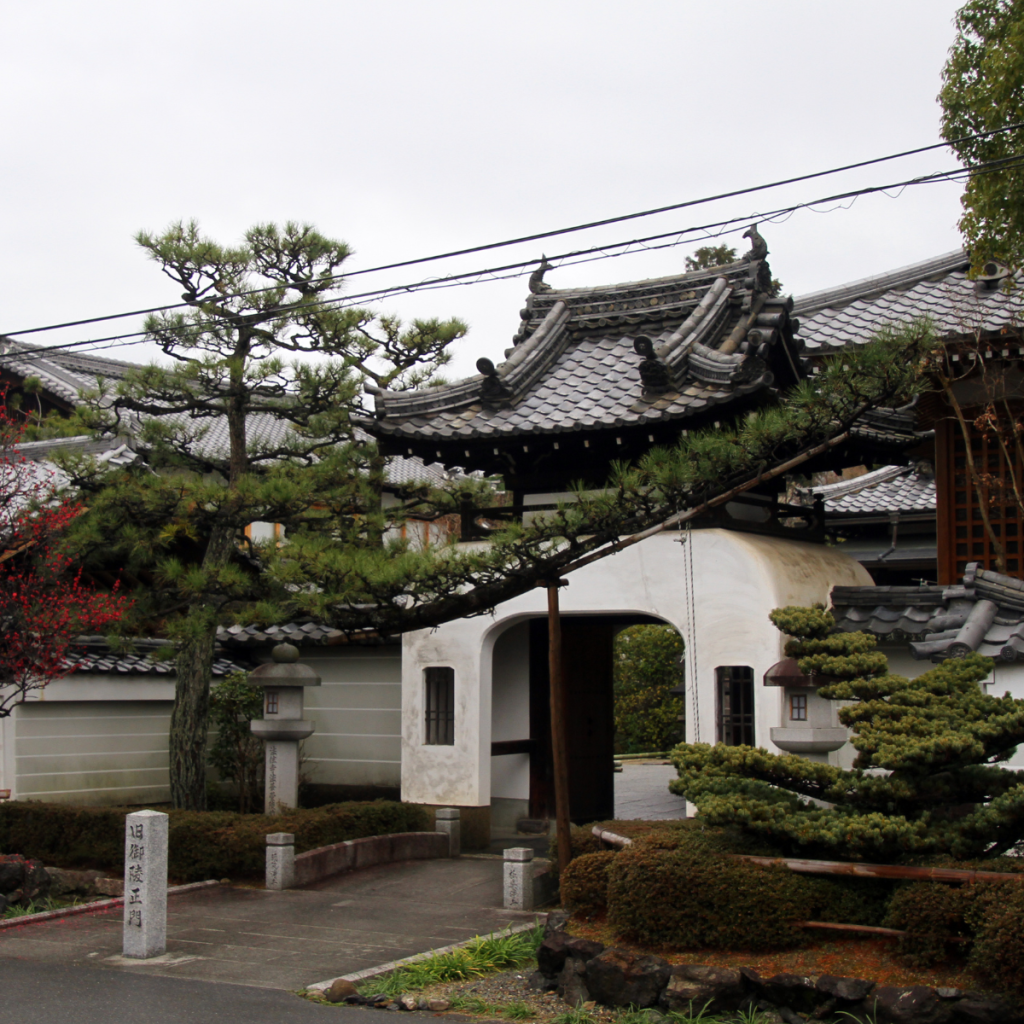
Date: December 14th, 2023
A Timeless Tale of Honor and Loyalty
The story of the 47 Rōnin has been a cherished part of Japanese culture, embodying the essence of samurai code and loyalty. In a tale that goes back to the early 18th century, forty-seven retainers were left masterless when their lord, Asano Naganori, was compelled to commit ritual suicide due to his altercation with another lord, Kira Yoshinaka. Led by Ōishi Kuranosuke, these rōnin planned for years before enacting vengeance against Kira to restore their lord’s honor.
The Connection Between Ōishi Kuranosuke and Hōjū-ji Temple
While preparing for their attack on Kira, Ōishi Kuranosuke resided in Kyoto. Here he pretended to lose his honor and frequented teahouses to disguise his intentions. Throughout this time, though, it is said that he made secret visits to Hōjū-ji Temple, where he would pray and meet clandestinely with his fellow rōnin to strategize their plan of action.
Recognizing their sacred connection to this hallowed tale and its protagonist, Hōjū-ji Temple commemorates the valiant acts of these loyal warriors every year on December 14th – the anniversary of their night raid – with a ceremony fittingly called Gishi-e Hōyō.
A Day of Remembrance: The Gishi-e Hōyō Ceremony
The Gishi-e Hōyō ceremonies commence with the traditional tayū dōchū procession, a parade led by a woman dressed as a tayū, or high-ranking courtesan. Once she enters the main hall of Hōjū-ji temple, the religious aspect of the event takes precedence as a memorial service is conducted by the temple’s head priest in honor of the 47 Rōnin.
Tea Offerings and Ceremonial Rites
On this special day, numerous visitors to the temple gather to pay their respects to these esteemed samurai. After the religious service concludes with a tea offering performed by the tayū and the head priest, attendees are treated to several rounds of formal tea ceremony presided over by a maiko (apprentice geisha) and the attending tayū. In addition to these revered rituals, visitors can also enjoy a scrumptious bowl of “night raid” soba noodles, further connecting them to this historical event.
The annual Gishi-e Hōyō ceremony at Hōjū-ji Temple serves as an enduring reminder of the spirit that binds Japan’s rich cultural heritage. With its intimate connection to Ōishi Kuranosuke and his loyal band of ronin, participating in this solemn ritual is truly an experience that transcends time and honors the eternal principles of loyalty, honor, and the essence of the samurai code.
Yamashina Gishi Matsuri
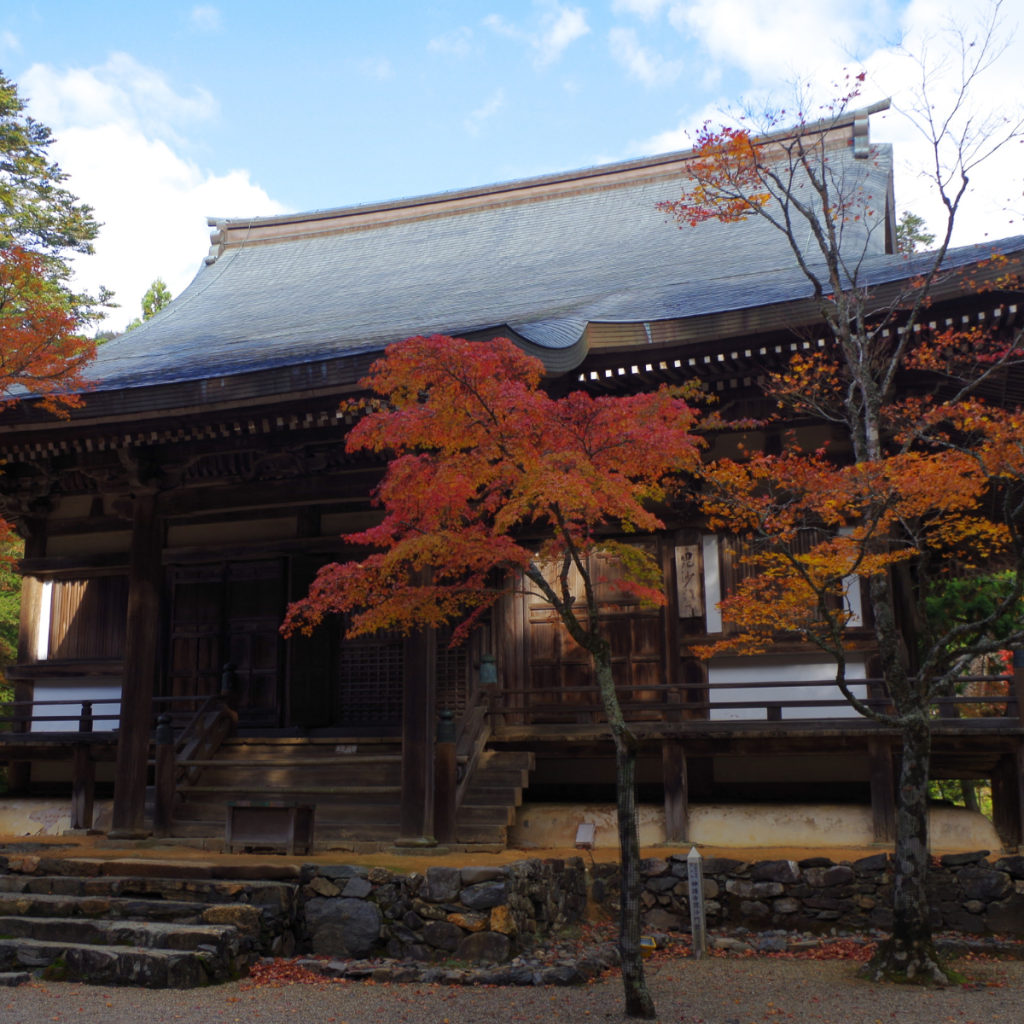
Date: December 14th, 2023
The Tale of the 47 Rōnin
Yamashina Gishi Matsuri honors the 47 Rōnin, a historical tale that highlights the samurai code of honor or Bushido. The story revolves around a group of masterless samurai, left without guidance after their lord was forced to commit suicide due to an indiscretion against a high-ranking official. The loyal warriors, driven by their need to restore their late lord’s honor and integrity, plotted revenge for years before successfully infiltrating the enemy’s estate and killing him.
Following this act of vengeance, the 47 Rōnin presented the slain official’s head at their lord’s grave as a sign of loyalty. Finally, they surrendered themselves to authority. However, recognizing that their actions were meant to uphold their lord’s honor, the 47 Rōnin were granted permission to commit suicide instead of being executed. This act immortalized them in Japanese legend and history.
Gishi Matsuri: A Celebration of Honor and Loyalty
Held annually on December 14th at Bishamon-dō temple in Yamashina, Kyoto, the Gishi Matsuri commemorates this historic tale. Participants are dressed in traditional clothing and armor as they journey through that neighborhood, symbolically reenacting elements from the tale.
A key part of the celebration involves a parade that depicts the rōnin’s march towards Tokyo where they intended to avenge their master. The procession briefly halts for various performances, including a taiko drumming group and stage reenactments of iconic scenes from the 47 Rōnin story brought to life by skilled TOEI actors.
Returning back to Bishamon-dō temple, participants offer prayers for the honorable souls who protected their master’s name at all costs. The Yamashina Gishi Festival serves as a reminder of the admirable and timeless values these warriors embody.
The Cultural Influence of Yamashina
Yamashina’s historical significance extends beyond the Gishi Matsuri, as it is home to numerous sites related to samurai warriors. It is also famous for being the hiding place of Yoshio Oishi, the central figure in another popular story called “Ako Roshi” that emphasizes Japanese Samurai’s loyalty.
“Ako Roshi” continues to be staged as a kabuki play under the title “Chushingura.” The festival in Yamashina honors not only the 47 Rōnin but the 47 warriors who accompanied Yoshio Oishi in his victory against a corrupt deputy. Citizens don traditional samurai attire and pay their respects at the Oishi Shrine.
The reenactments during the celebration transform modern-day Yamashina into a live period drama, allowing visitors and locals alike to witness the unwavering dedication of these brave Japanese warriors fighting for their master’s honor.
Shimai Kōbō
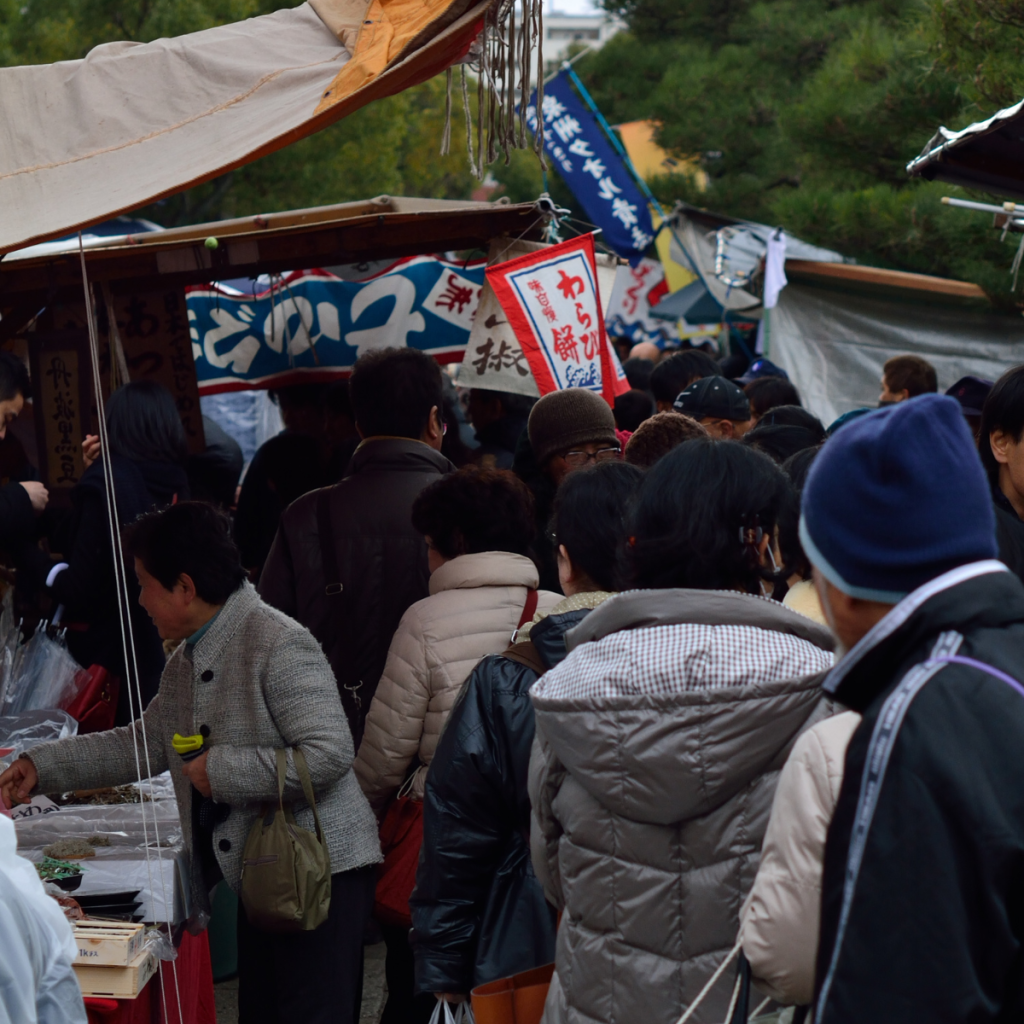
Date: December 21st, 2023
A Historical Affair
On the 21st of every month, a large flea market is held on the grounds of Tō-ji, a famous Buddhist temple in Kyoto. This event is in honor of the renowned Buddhist priest Kōbō Daishi, who headed the temple in the 9th century and passed away on March 21st. Owing to his popularity, the flea market is affectionately referred to as “Kōbō-san.” The bustling markets are frequented by Japanese locals and foreigners alike, offering a wide variety of second-hand goods, antiques, food stalls, kimono, handicrafts, and more!
A Bargain Hunter’s Paradise: Shimai Kōbō
For those looking to strike a bargain and immerse themselves in the vibrant atmosphere of the flea market culture of Japan, Shimai Kōbō represents the last Kōbō-san flea market of the year that takes place on December 21st. Compared to its monthly counterpart events, this date sees an even larger turnout, with more vendors offering a wider array of deals and discounted products. Visitors from all walks of life can find something unique at Shimai Kobo–be it cheap kimono or authentic Kyoto pottery.
About Toji Kobo Market
The Toji Kobo Market takes place at the historical Toji Temple—situated near Kintetsu railway’s Toji Station—on the 21st of every month. The temple is most well-known for its impressive five-story pagoda. On each market day, around 1,000 textiles, antiques, ceramics, and food stalls gather on its grounds. This beloved market has been a fixture among Kyoto’s people for over 700 years, providing both tourists and locals with the chance to buy unique items while experiencing the atmosphere of one of Kyoto’s oldest markets.
Highlights of the Market: Antiques and Textiles
At the Toji Kobo Market, you can find a cornucopia of quality antiques—such as ceramics, including tea cups and vases. If you are unsure about which item to purchase or need expert guidance in selecting a piece that suits your preferences, do not hesitate to ask knowledgeable stall owners for advice. However, be mindful that they may have difficulty communicating in English.
Captivate Your Interest with Diverse Offerings
The Shimai Kōbō flea market boasts an unbelievably diverse range of products—from footwear and watches to chopsticks and statues of Buddha. You even have the chance to find nostalgic toys and old records featuring tunes from bygone Japanese singers—a veritable treasure trove for collectors! Pick up a memento of your trip to Kyoto at this historical marketplace.
Engage with Local Artisans
Many stall owners at Shimai Kōbō are the very artisans who crafted the products they offer for sale. Feel free to engage them in conversation or provide feedback, but be aware of potential communication barriers due to language differences.
Indulge in Delicious Food Stalls
After a long day of bargain hunting and appreciating beautiful handcrafted items at Shimai Kōbō, head to one of the numerous food stalls offering tantalizing dishes like yakisoba or oden. You can even find stalls selling ice-cold beers and other alcoholic beverages—a perfect way to unwind as you enjoy traditional Japanese street food!
Etiquette at the Market
As with any public gathering, it is imperative to respect the etiquette when visiting Shimai Kōbō. Handle offered items with care and dispose of any waste in designated rubbish bins provided throughout the market area.
Shimai Tenjin
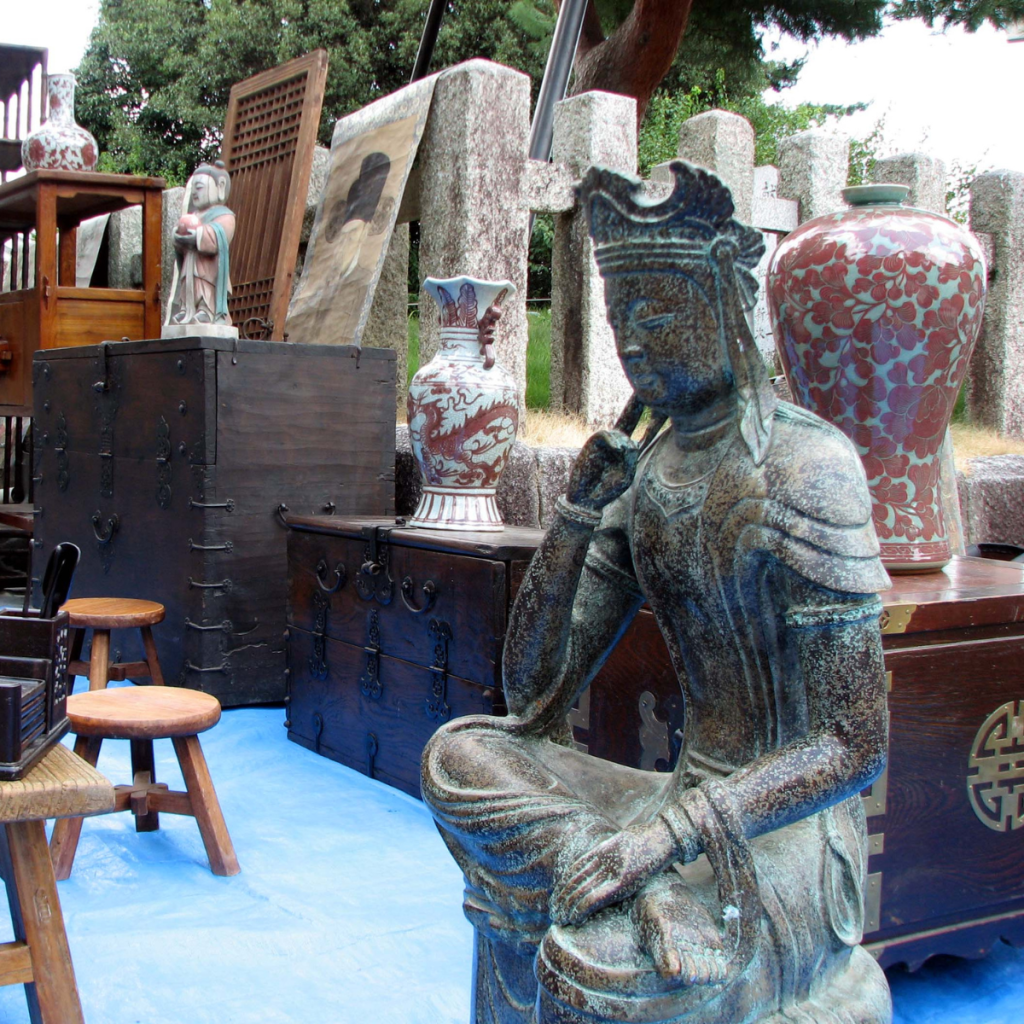
Date: December 25th, 2023
A Monthly Tradition at Kitano Tenmangū Shrine
Regardless of weather conditions or the day of the week, when the 25th of the month arrives, locals and tourists in Kyoto flock to the famous Kitano Tenmangū Shrine. Known as “Tenjin-san,” this monthly flea market is cherished for its incredible bargains and rare finds. Although held monthly, the January and December markets tend to be the largest. The market attracts around 50 to 60 thousand people every month, with January, February, June, and December being the busiest months, drawing up to 150,000 visitors.
The name “Tenjin-san” originates from Tenjin, the revered god of knowledge and scholarship. This deity was once a historical figure named Sugawara no Michizane (845 – 903), a bureaucrat during the Heian period. Various events and rituals at Kitano Tenmangū align with Michizane’s life; as such, the lively flea market takes place on the 25th to commemorate his passing.
The Shimai Tenjin flea market opens around 6 a.m. and concludes at 6 p.m., showcasing an array of vendors within the shrine grounds and neighboring streets. While an early visit may allow for peaceful browsing and bargain-hunting opportunities, those who attend after sunset can admire over 350 stone lanterns and 250 paper lanterns illuminating Kitano Tenmangu Shrine’s main hall.
Diverse Offerings at Shimai Tenjin Flea Market
Farm-fresh produce meets handcrafted artwork; antique pottery exists alongside modern fashion – such is the diverse range available at Shimai Tenjin. Visitors will find everything from traditional kimonos to street food stalls offering takoyaki, yaki soba noodles, karaage fried chicken, and even oden.
Antique Stalls
Shimai Tenjin is most famous for its antique stalls, where you can find ancient Japanese pottery, jewelry, second-hand clothes, and beyond. Although Kyoto has no shortage of antique shops, the Ennichi Market stands out for its traveler-friendly atmosphere. Chatting with stall owners and practicing bargaining skills is the best way to immerse oneself in this unique environment.
Kimono Selection
A variety of antique and repaired kimonos are available at many Ennichi Market stalls. With varying sizes and prices, it’s crucial to inquire with the vendor about dimensions and cost before purchasing a kimono that catches your eye.
Shooting Gallery
For visitors seeking interactive experiences, makeshift shooting gallery stalls offer a fun festival pastime loved by all ages. Successful marksmen may even win a toy or intriguing snack.
Sampling Local Food
After exploring the vast flea market, don’t forget to indulge in irresistible street food at various food stalls. Smaller portions make it easy to enjoy these delicious dishes while continuing to wander around the market.
If you’re visiting Kyoto on the 25th of any month, be sure not to miss the Shimai Tenjin flea market held at Kitano Tenmangū Shrine. With its wide array of antiques, fashion items, handcrafted goods, local food offerings, and more – there’s something for everyone.
Joya-no-kane (Bell Ringing on New Year’s Eve)
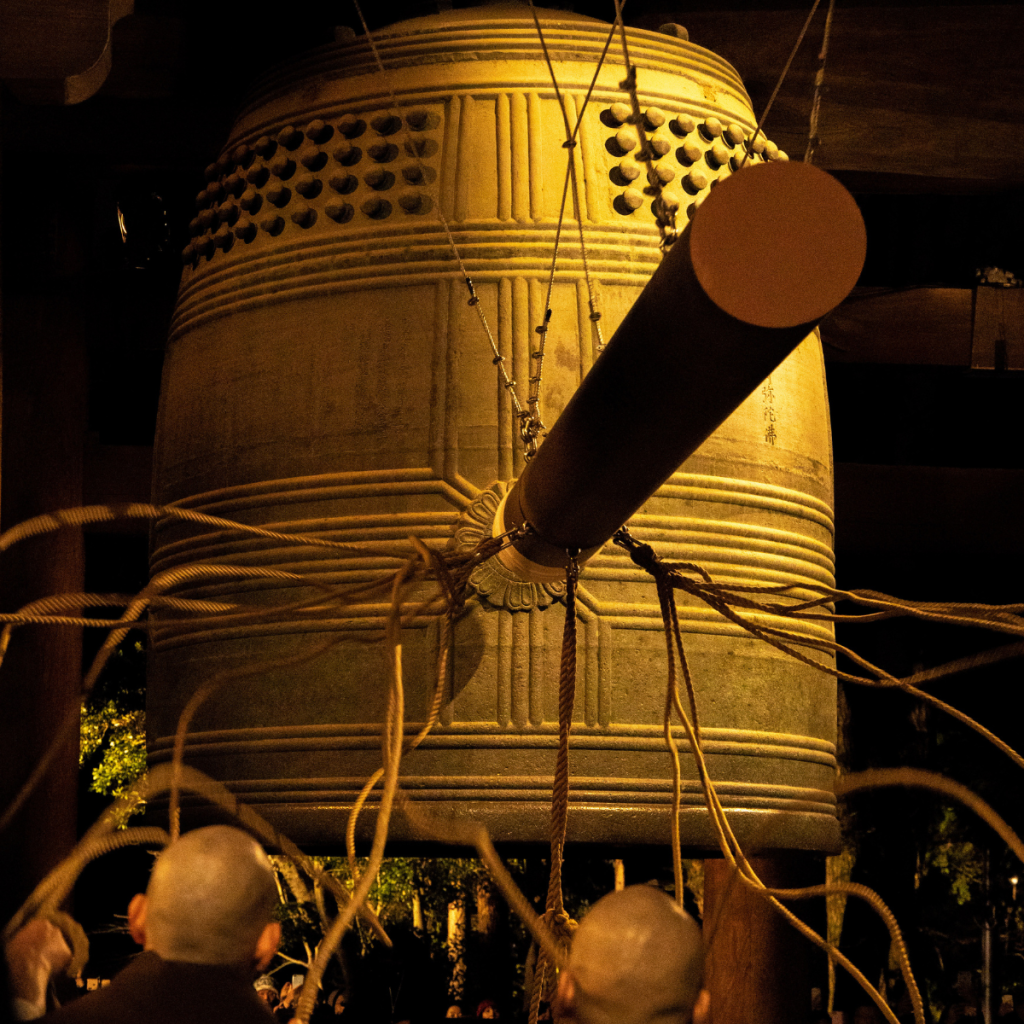
Date: December 31st, 2023
Joya no Kane: A Japanese New Year’s Eve Tradition
On December 31st, New Year’s Eve, the annual Joya no Kane event occurs at temples across Japan. This traditional event involves ringing temple bells 108 times, beginning on the last day of the year and continuing throughout the entire day. The number 108 represents the earthly desires that are believed to cause suffering in the human heart. Listening to the bell ringing is thought to purify the soul and dispel these desires, allowing individuals to begin the new year with a clean slate.
As home to numerous temples, Kyoto hosts various Joya no Kane events. However, the most renowned event is held at Chion-in Temple, where 17 monks work together to ring a colossal three-meter-tall bell known as Daibonsho.
Enormous Daibonsho Bell: An Important Cultural Property
Chion-in Temple’s Daibonsho bell boasts an impressive height of over three meters and weighs approximately 70 tons. Alongside the bells at Todaiji Temple in Nara and Houkouji Temple in Kyoto, Daibonsho is known as one of Japan’s three great temple bells and is registered as an important cultural property. It is astounding that this immense bell is rung 108 times consecutively in one-minute intervals.
Unique Method for Ringing the Bell
Given the massive size of the Daibonsho bell, a team of 17 monks must work in unison to perform the Joya no Kane ritual. First, 16 monks take hold of a thick rope called oyazuna and pull the wooden bell hammer in time with the call of the ringer. Then, as illustrated in photographs of the event, the bell ringer uses their entire body to toll the bell by swinging from the wooden hammer. This unique bell-ringing method is specific to Chion-in Temple.
Practice Rings Reveal the Intricacy of the Process
On December 27th, just days before the main event, practice rings take place at Chion-in Temple. The bell-ringing method is both unusual and difficult, making rehearsals essential for the monks’ success. Visitors are welcome to witness these practice sessions, providing an opportunity for purification even before the new year arrives.
Stories You Will Also Like
Top 5 Underrated Prefectures Where You Can Buy a Home for Under ¥500,000
Why Japan Lives Longer Despite Eating Carbs, Using Seed Oils, And Skipping The Gym
Tourist Arrivals to Japan Plunge Amid Rumors of July 2025 Disaster